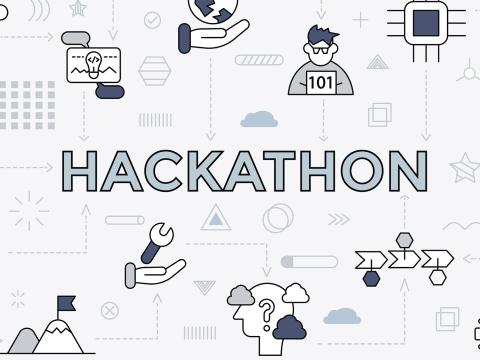President's Commentary: The Dawning Age of Biotechnology
We’re tackling biotechnology this month, a technology area with which AFCEA isn’t traditionally aligned. But we see a developing synergy between this burgeoning discipline and national security and technology.
In fact, it will be a key topic tackled during our TechNet Emergence conference in July, as biotechnology is a top technology area for the undersecretary of defense for Research and Engineering.
Here’s how I present the relevance of biotechnology with AFCEA’s mission: In April, the bipartisan National Security Commission on Emerging Biotechnology (NSCEB) released its final report, Charting the Future with Biotechnology, with a solemn message: the United States is falling behind China in key areas of emerging biotechnology.
Mankind has used biotechnology throughout the ages, but the NSCEB declared that because of artificial intelligence (AI) and other innovations, a new age is dawning.
“We are entering the age of biotechnology, a time when biology is the basis of innovation. Every strategic sector—including defense, healthcare, agriculture, energy, and manufacturing—can be advanced by biotechnology, but also breached by it, too. These are not just matters of scientific achievement; they are questions of national security, economic power, and global influence.”
The Pentagon in 2023 identified biotechnology as one of 14 technology areas vital to maintaining national security. It is considered a seed area emerging opportunity. Last year, the Department of Defense (DoD) launched the Distributed Bioindustrial Manufacturing Investment Program (DBMIP) to strengthen domestic supply chains and maintain an American edge in biotechnology.
Furthermore, a Department of Homeland Security report from April of last year stated: “The increased proliferation and capabilities of AI tools … may lead to significant changes in the landscape of threats to U.S. national security over time, including by influencing the means, accessibility, or likelihood of a successful CBRN [chemical, biological, radiological and nuclear] attack.”
To counter artificial intelligence (AI)-enabled weapons of mass destruction, the United States and its partners and allies will need AI-enabled sensors and capabilities to enhance detection and predictive analytics, and to empower continuous learning, threat adaptability and the integration of chem-bio detection data with other systems, such as drones and quantum sensors. The Department of Homeland Security report found that the U.S. government and its allies and partners “have already applied AI to counter CBRN threats by applying the tools to help identify, prevent, and mitigate the impact of these threats” and that the research community and international organizations, often under their own volition, have also been “considering how to apply AI specifically to counter chemical and biological threats.”
The nascent research presents an opportunity for the United States and its allies and partners to contribute to developing AI tools to identify CBRN threats, monitor and collect information on state and non-state actor related activities, guide efforts to interrupt illicit procurement networks related to proliferation, and develop and enhance defensive countermeasures, such as detectors, decontamination methods and medical countermeasures, the report added.
Cyber capabilities also are critical to this intersection of AI and biotechnology. Biotechnology research must be secured from theft by competitors or adversaries. And bioinformatics, the application of computer science to biotechnology, requires cybersecurity to ensure the integrity and confidentiality of the data, according to Tripwire, which also notes the need to secure the AI, blockchain and other emerging technologies increasingly used in biotechnology research.
In its report, the NSCEB offered a number of recommendations, including the creation of a major new architecture for biotechnology research and development called the Biotechnology Coupled with Artificial Intelligence and Transformative Automation for Laboratory Yielding Strategic Technologies (BioCATALYST) network to be co-led by DoD and the Office of the Director of National Intelligence.
From AFCEA’s perspective, it is especially gratifying to also see an emphasis on working with industry to scale domestic production of biotechnologies and mobilizing the combined strengths of partners and allies.
By strengthening ties with countries we count on, we can enter this new age together and ensure biotechnologies offer far more promise than peril.





Comments